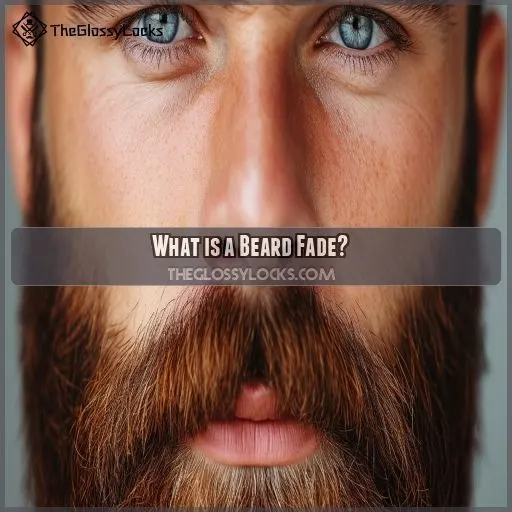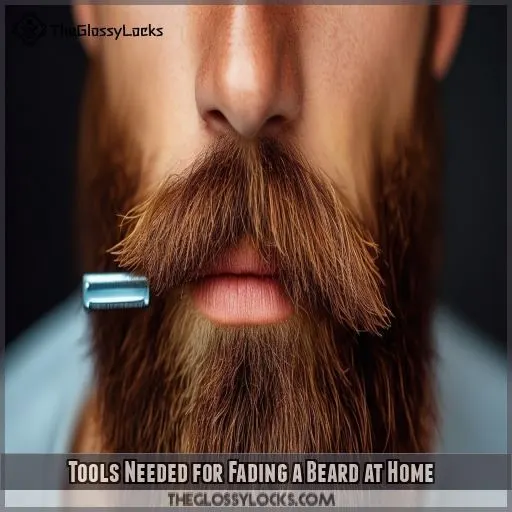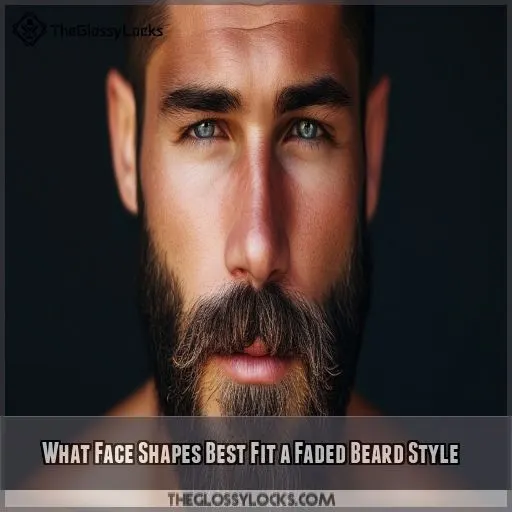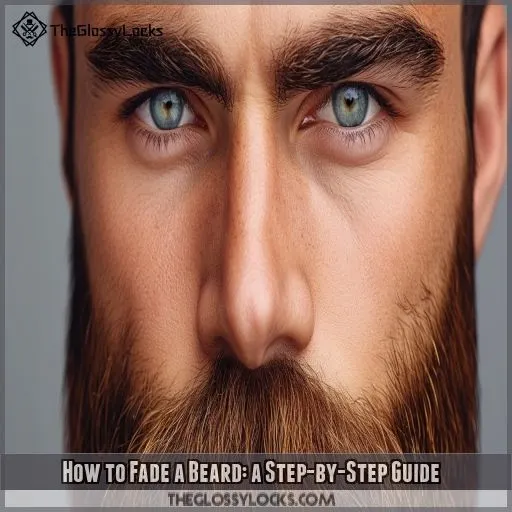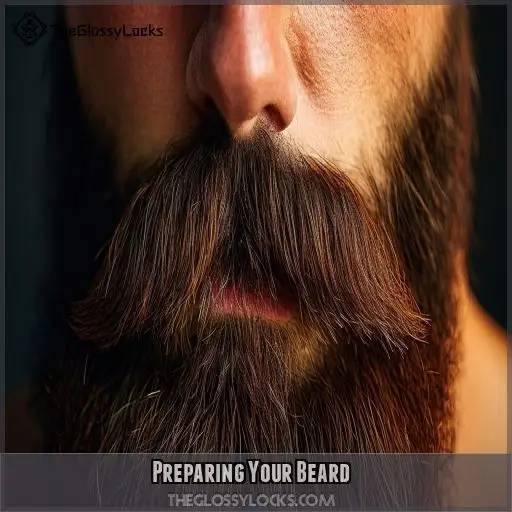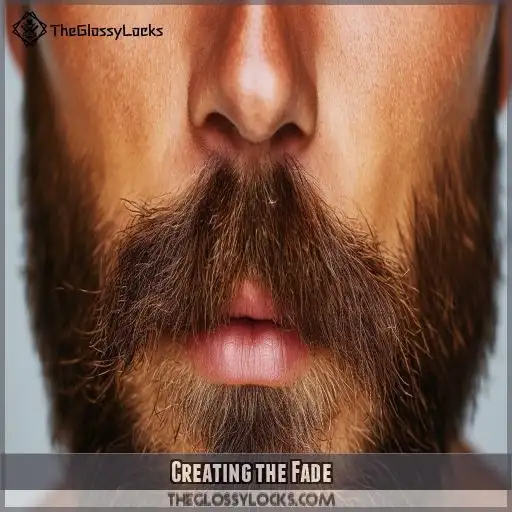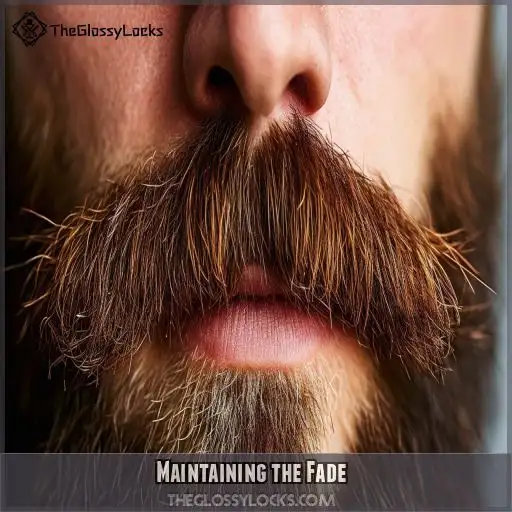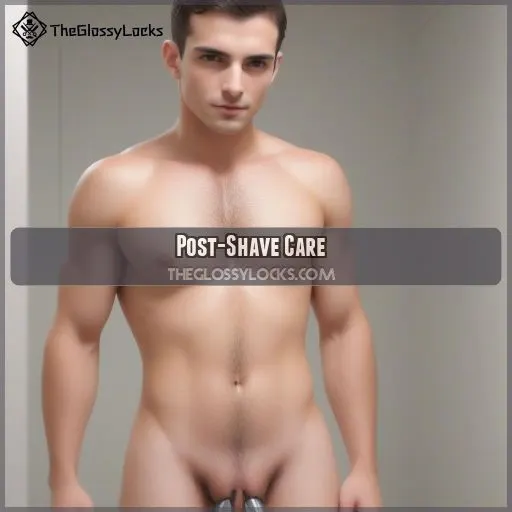This site is supported by our readers. We may earn a commission, at no cost to you, if you purchase through links.
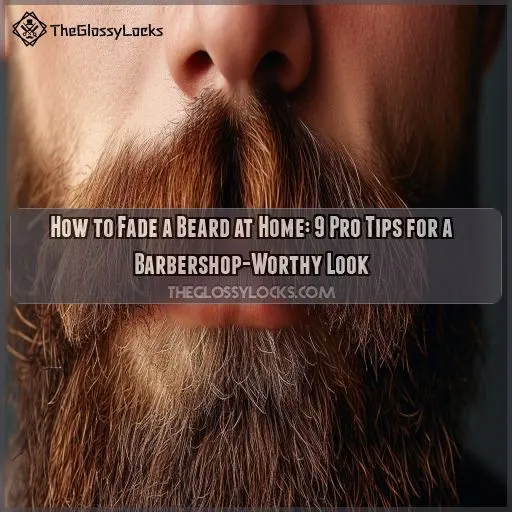 You’ve mastered the art of growing a beard, but can you fade it like a pro?
You’ve mastered the art of growing a beard, but can you fade it like a pro?
Ironically, achieving that barbershop-worthy look at home isn’t as hard as it seems.
With the right tools and techniques, you can learn how to fade a beard at home, saving time and money.
In this guide, we’ll walk you through 9 expert tips to create a smooth shift from your sideburns to your chin.
Get ready to take control of your facial hair and learn the secret to a perfectly faded beard.
Table Of Contents
- Key Takeaways
- What is a Beard Fade?
- Tools Needed for Fading a Beard at Home
- How to Fade a Beard at Home
- Why Fading a Beard at a Barbershop is Better
- What Face Shapes Best Fit a Faded Beard Style
- How to Fade a Beard: a Step-by-Step Guide
- Preparing Your Beard
- Creating the Fade
- Maintaining the Fade
- Post-Shave Care
- Frequently Asked Questions (FAQs)
- How do you fade a beard?
- Should a beard be faded?
- How do you maintain a faded beard?
- How do you fade a beard with a trimmer?
- How long should my beard be before fading?
- Can I fade a patchy or uneven beard?
- How often should I wash my beard when fading?
- Are there any beard styles that dont work with fading?
- Whats the best way to fix a botched beard fade?
- Conclusion
Key Takeaways
- Investing in the right tools is half the battle – a quality beard trimmer with adjustable guards is your new BFF for achieving that barbershop-worthy fade at home.
- Rome wasn’t built in a day, and neither is a perfect beard fade – start with the longest guard and gradually decrease, using a scooping motion to blend like a pro.
- your face shape is the canvas, so choose your fade wisely – round and heart-shaped faces, you’ve hit the jackpot! But don’t worry, oval and square faces can still rock this look with a few tweaks.
- Maintenance is key, folks – touch up your masterpiece every 3–5 days, and don’t forget to pamper your skin with some post-shave TLC. Your face (and your admirers) will thank you!
What is a Beard Fade?
Ever wondered how to achieve that sleek, tapered look for your beard?
Enter the beard fade. It’s a style that goes from shorter hair near your ears to fuller growth at your chin.
You’ll create a polished appearance that’s both modern and masculine.
Using a beard trimmer and shaping techniques, you can craft a faded beard style that suits your face shape and personal taste.
Whether you’re aiming for a subtle blend or a dramatic contrast, mastering the beard fade will elevate your grooming game.
Ready to transform your facial hair into a work of art?
Tools Needed for Fading a Beard at Home
Now that you understand what a beard fade is, let’s gear up for the task.
You’ll need the right tools to achieve that barbershop-worthy look at home.
First and foremost, invest in a quality beard trimmer with adjustable length guards.
This versatile tool is your new best friend.
Don’t forget a trusty beard comb and brush to keep those whiskers in check.
For precision work, grab an outliner or razor.
These essentials will help you master various beard fade styles.
With the right equipment in hand, you’re ready to transform your facial fuzz into a work of art.
How to Fade a Beard at Home
Now that you’ve got your tools ready, it’s time to tackle that beard fade at home. Start by outlining your beard shape with a trimmer, creating clean lines. Next, follow these pro tips for a barbershop-worthy look:
- Begin with the longest guard and gradually decrease
- Use a scooping motion to blend different lengths
- Trim against the grain for a more even fade
Why Fading a Beard at a Barbershop is Better
While learning how to fade a beard at home can save you money,
heading to a barbershop offers real advantages.
Professional barbers have the experience and skills to create a sharp, well-defined fade that’s perfect for your face.
They’re wizards with tapered beards, expertly blending different beard lengths for a seamless look.
You’ll also benefit from their knowledge of various beard styles and products.
Plus, the risk of messing up your beard is much lower in skilled hands.
What Face Shapes Best Fit a Faded Beard Style
Wondering if a faded beard will suit your face?
You’re in luck if you’ve got a round or heart-shaped face. Faded beards work wonders for these face shapes, adding definition to your jawline and elongating your features.
If you’re rocking an oval or square face, don’t worry – you can still pull off this style with some tweaks.
For guys with a bit more to love, a faded beard can be your secret weapon. It’ll slim down your face and give you that chiseled look you’ve been after.
How to Fade a Beard: a Step-by-Step Guide
Now that you’ve identified your face shape, it’s time to master the art of beard fading. This step-by-step guide will transform your facial hair into a barbershop-worthy masterpiece. With the right tools and techniques, you’ll be creating professional-looking fades in no time.
Here are five key steps to achieve the perfect beard fade:
- Start with clean, dry facial hair
- Choose the right trimmer settings
- Work in sections, from bottom to top
- Blend carefully between lengths
- Finish with beard oil for a polished look
Preparing Your Beard
Before diving into the fade, you’ll want to prep your beard for success. Start by washing your facial hair with a gentle cleanser to remove any dirt or oils. Then, grab your trusty comb and work through any tangles, following the natural growth direction. Now’s the time to decide on your desired beard length and trim accordingly. Here’s a quick guide to help you choose:
| Beard Style | Length (mm) | Maintenance Level |
|---|---|---|
| Stubble | 1-3 | Low |
| Short | 4-10 | Medium |
| Medium | 11-20 | High |
Don’t forget to apply a few drops of beard oil to keep your whiskers soft and manageable.
Creating the Fade
- Start with the longest guard on your trimmer
- Work in sections, gradually decreasing the guard length
- Use a scooping motion to blend seamlessly
- Comb and check for evenness as you go
Begin at your jawline, where your beard’s fullest. Move upward, reducing the guard size every inch or so. Remember, the key to a perfect fade is patience and precision. Don’t rush – take your time to blend each section carefully. You’re not just trimming; you’re crafting your signature look!
Maintaining the Fade
To keep your beard fade looking sharp, you’ll need to stay on top of it.
Aim to touch up your fade every 3-5 days, depending on how fast your hair grows.
Your trusty trimmer will be your best friend in this routine.
Start with the longest setting and work your way down, just like when you first created the fade.
Pay extra attention to the areas where the fade blends, using a scooping motion to make it smooth.
Don’t forget to clean up your neckline and cheeks for that polished look.
With consistent upkeep, you’ll rock that barbershop-worthy fade 24/7.
Post-Shave Care
After fading your beard, it’s important to care for your skin to prevent irritation.
Start by splashing your face with cool water to close the pores.
Pat dry gently, then apply a soothing aftershave balm.
This step is key to reducing redness and calming your skin.
Don’t skip moisturizing – it’s essential for keeping your beard and skin healthy.
Experiment with different products to find what works best for you.
Frequently Asked Questions (FAQs)
How do you fade a beard?
To fade your beard, start with the longest length at the chin. Gradually decrease the trimmer guard size as you move up, blending shorter hair into longer. Use a scooping motion to make the change smooth. Maintain with regular trims.
Should a beard be faded?
Fading your beard can elevate your look, creating a polished, refined appearance. It’s a versatile style that suits many face shapes and can help define your jawline. You’ll need practice, but the results are worth the effort.
How do you maintain a faded beard?
Like a well-tended garden, your faded beard needs regular care. Trim weekly, using gradually shorter guard settings. You’ll maintain your look by moisturizing, detangling daily, and addressing stray hairs. Don’t forget to nourish with beard oil for a polished finish.
How do you fade a beard with a trimmer?
Start with the longest guard, trimming your entire beard. gradually decrease the guard size as you move up your face, creating a smooth shift. Use a scooping motion to blend between lengths, ensuring a seamless fade.
How long should my beard be before fading?
You’ll want your beard to be at least 1/2 inch long before fading. This gives you enough length to work with different guard sizes and create a smooth change. Shorter beards are trickier to fade effectively.
Can I fade a patchy or uneven beard?
Ironically, your patchy beard‘s your ticket to a stylish fade. You can fade a patchy beard, but it’ll require extra care. Trim longer areas gradually, blending into shorter patches. Use beard oil to enhance texture and create a more uniform appearance.
How often should I wash my beard when fading?
You’ll want to wash your beard 2-3 times a week when fading. Use a gentle cleanser to avoid drying out your skin. Regular washing helps maintain the fade and keeps your beard looking fresh and clean.
Are there any beard styles that dont work with fading?
While most beards can be faded, very short stubble or long, full beards don’t work well with fading. You’ll need enough length to create a gradual change. Patchy beards may also struggle to achieve a clean fade.
Whats the best way to fix a botched beard fade?
You’ve botched your beard fade. Don’t panic! Start by evening out the shortest areas, then gradually blend longer sections. If it’s still uneven, consider a shorter overall style. Professional help might be your ace in the hole.
Conclusion
Mastering the art of how to fade a beard at home takes practice and patience.
With the right tools and techniques, you’ll soon be crafting barbershop-worthy looks in your own bathroom.
Remember to prepare your beard properly, create a gradual fade, and maintain your style with regular touch-ups.
Don’t forget post-shave care to keep your skin healthy.
Whether you’re aiming for a subtle or dramatic fade, these tips will help you achieve the perfect look.
Embrace your facial flair and enjoy your newfound beard-fading skills.

